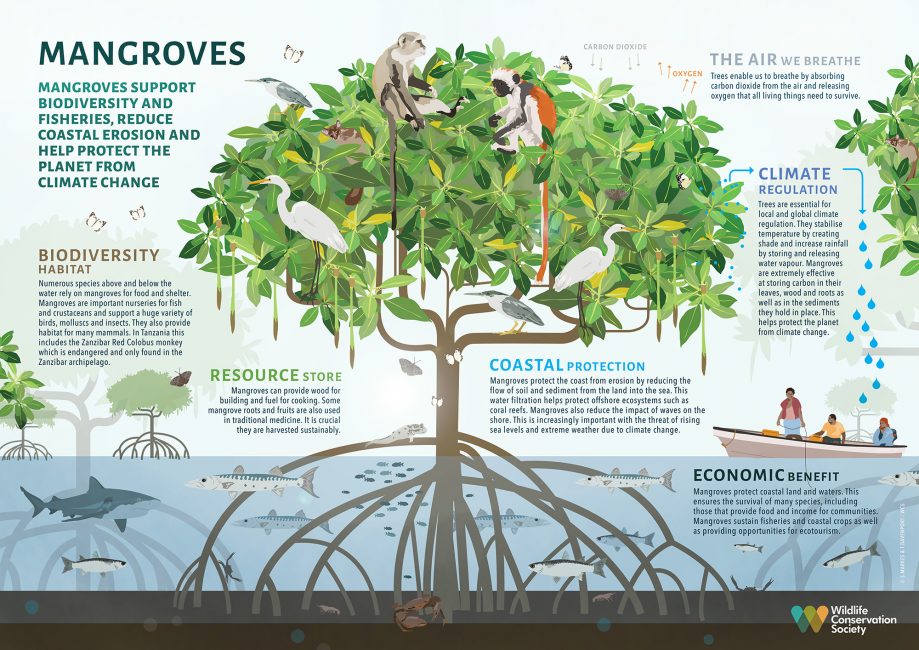
September 27, 2021
The Value of Mangroves
- as seen by -
 Sarah Markes and Tim Davenport
@WCS_Tanzania
Sarah Markes and Tim Davenport
@WCS_Tanzania Mangrove forests are found along tropical and subtropical coasts, with the Western Indian Ocean being home to particularly high mangrove diversity. These forests support a huge array of biodiversity, providing food and shelter for many species above and below the water – from birds, mammals, and insects to fish, molluscs, and crustaceans. They are important nurseries for fish, shellfish, and some shark species. They help protect coral reefs and seagrass beds by filtering runoff from the land, preventing much soil and sediment from entering the sea.
Mangroves benefit humans in many ways – through providing a source of food, traditional medicine, and timber in addition to protecting shorelines from erosion, storms, and rising sea levels. They are also extremely effective at storing carbon in their leaves, wood, and roots as well as in the sediments they hold in place. Protecting and restoring mangroves is hugely important in the battle against human-induced climate change.
Sadly, mangroves are threatened by coastal development, unsustainable wood collection, and clearing for aquaculture. Studies indicate that at least 35 percent of the world’s mangrove forests may have been lost between 1980 and 2000.
The Wildlife Conservation Society created this educational poster to highlight the value of mangrove ecosystems. It is available in English, Portuguese, and Kiswahili. Please email sarahindar@gmail.com for a print resolution copy.
EDITOR’S NOTE: This is part of a regular series of Wild View posts featuring environment and conservation awareness materials created by Sarah Markes and Tim Davenport.
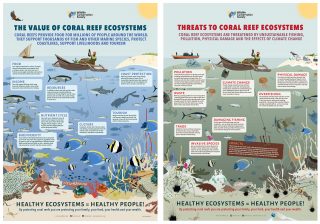
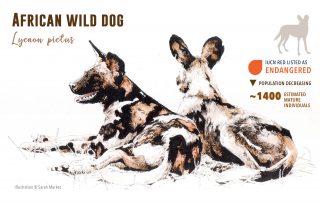
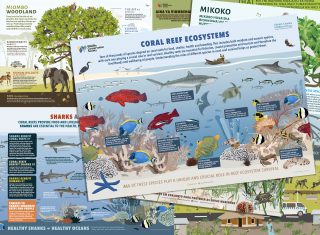
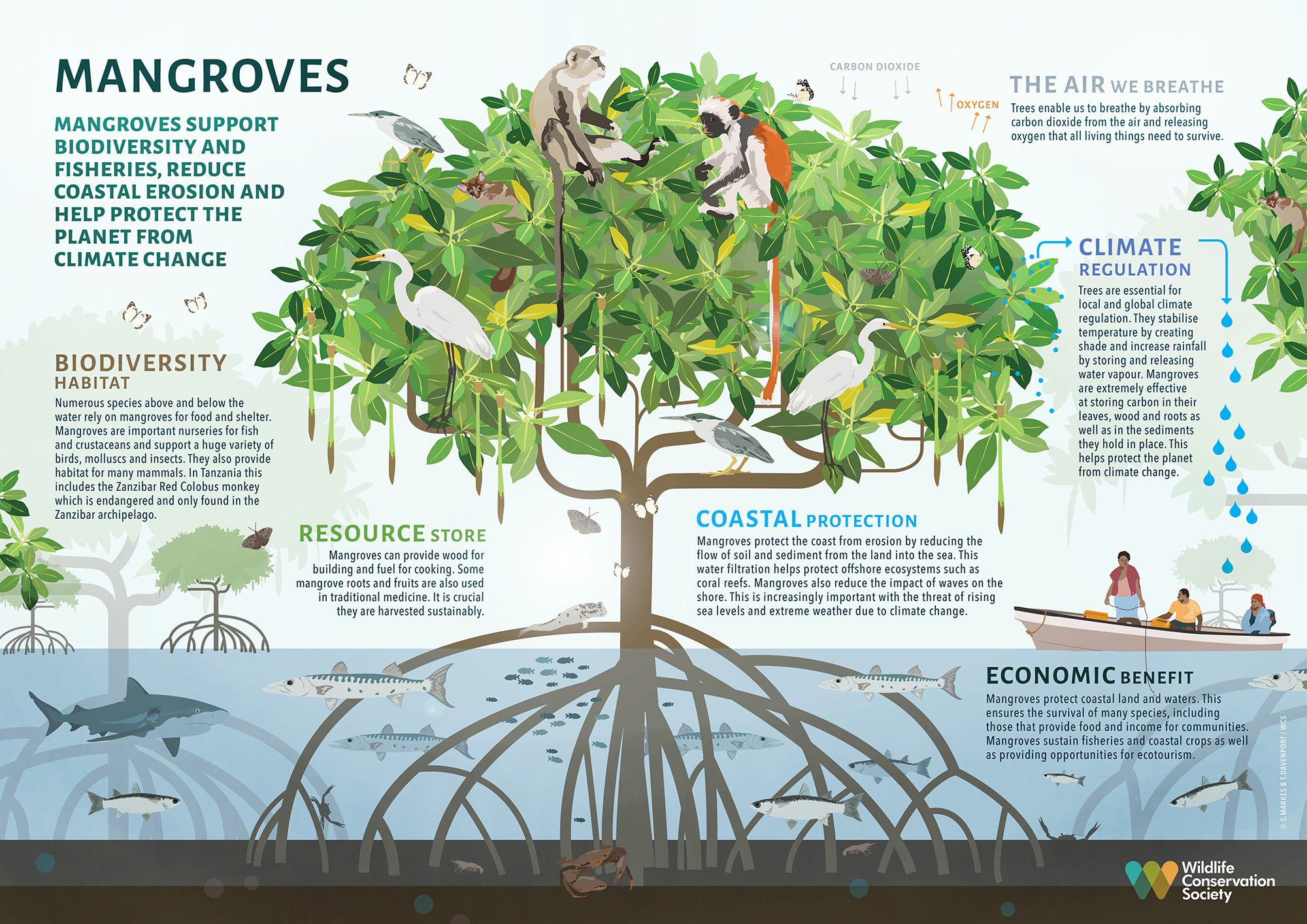
Leave a Comment
Pingback: Mangrove Ecosystem – Importance, Threats and Way Forward – Mangrove forest